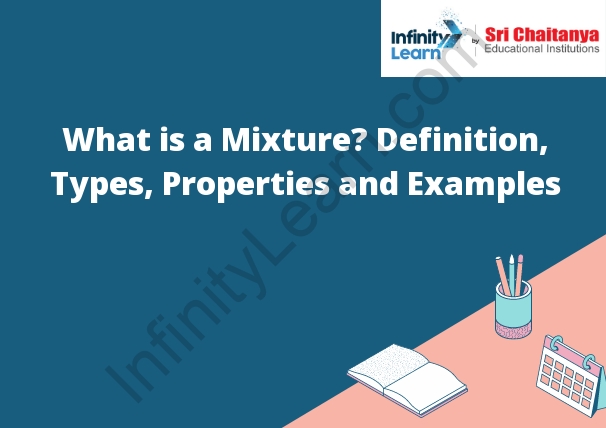Table of Contents
What is a mixture?
What is a Mixture? Definition: A mixture is a physical combination of two or more substances. The substances may be elements, compounds, or mixtures themselves. The substances in a mixture retain their individual chemical properties.

Properties and Characteristics of mixtures
A mixture is a material composed of two or more substances that are physically combined, but not chemically combined. The substances in a mixture retain their individual chemical properties.
Mixtures have a variety of properties, depending on the substances that make them up. Some common properties of mixtures include:
- Homogeneity: A mixture is said to be homogeneous if its composition is uniform throughout. This means that the elements in a mixture are evenly distributed and no one substance is more concentrated than the others.
- Heterogeneity: A mixture is said to be heterogeneous if its composition is not uniform throughout. This means that the elements in a mixture are not evenly distributed and some substances are more concentrated than the others.
- Physical properties: The physical properties of a mixture depend on the physical properties of the substances that make it up. For example, the melting point, boiling point, and density of a mixture will be the average of the melting points, boiling points, and densities of the substances that make it up.
- Chemical properties: The chemical properties of a mixture depend on the chemical properties of the substances that make it up. For example, the reactivity of a mixture will be the average of the reactivities of the substances that make it up.
Types of Mixtures
There are many types of mixtures, but some of the most common are solutions, suspensions, and colloids.
- A solution is a type of mixture in which one substance, the solute, is dissolved in another, the solvent. The solvent is always a liquid, and the solute can be a solid, liquid, or gas. Salt water is an example of a solution.
- A suspension is a type of mixture in which one substance, the dispersed phase, is suspended in another, the dispersion medium. The dispersed phase can be a solid, liquid, or gas, and the dispersion medium can be a solid, liquid, or gas. Fruit juice is an example of a suspension.
- A colloid is a type of mixture in which one substance, the colloid, is dispersed in another, the dispersion medium. The colloid can be a solid, liquid, or gas, and the dispersion medium can be a solid, liquid, or gas. Milk is an example of a colloid.
Division based on particle size
In division based on particle size, a material is divided into smaller and smaller parts until the desired size is reached. This size is then used to determine the properties of the material. For example, smaller particles may be more affected by air resistance, while larger particles may be more affected by gravity.
Some Trivial Facts About Mixtures
- A mixture is a material made up of two or more substances that are physically combined, but not chemically combined.
- Mixtures can be either homogeneous or heterogeneous.
- Homogeneous mixtures have a uniform composition throughout, while heterogeneous mixtures have a non-uniform composition.
- Mixtures can be separated into their individual components by physical means, such as filtration or distillation.






